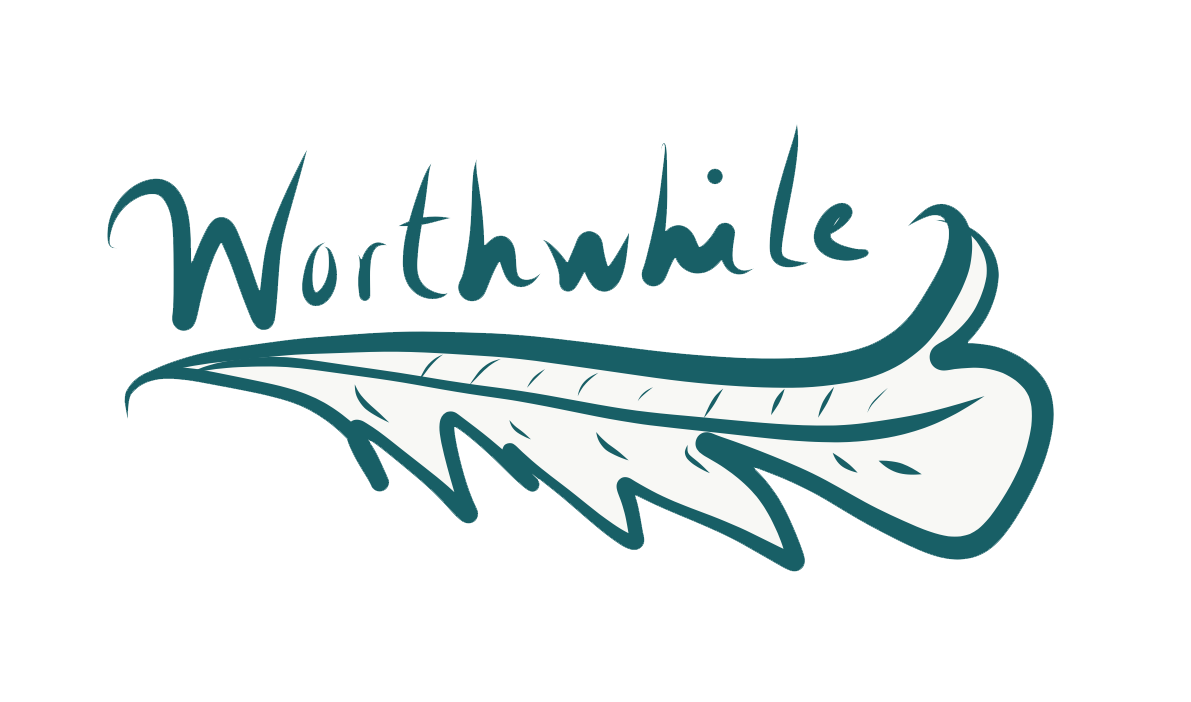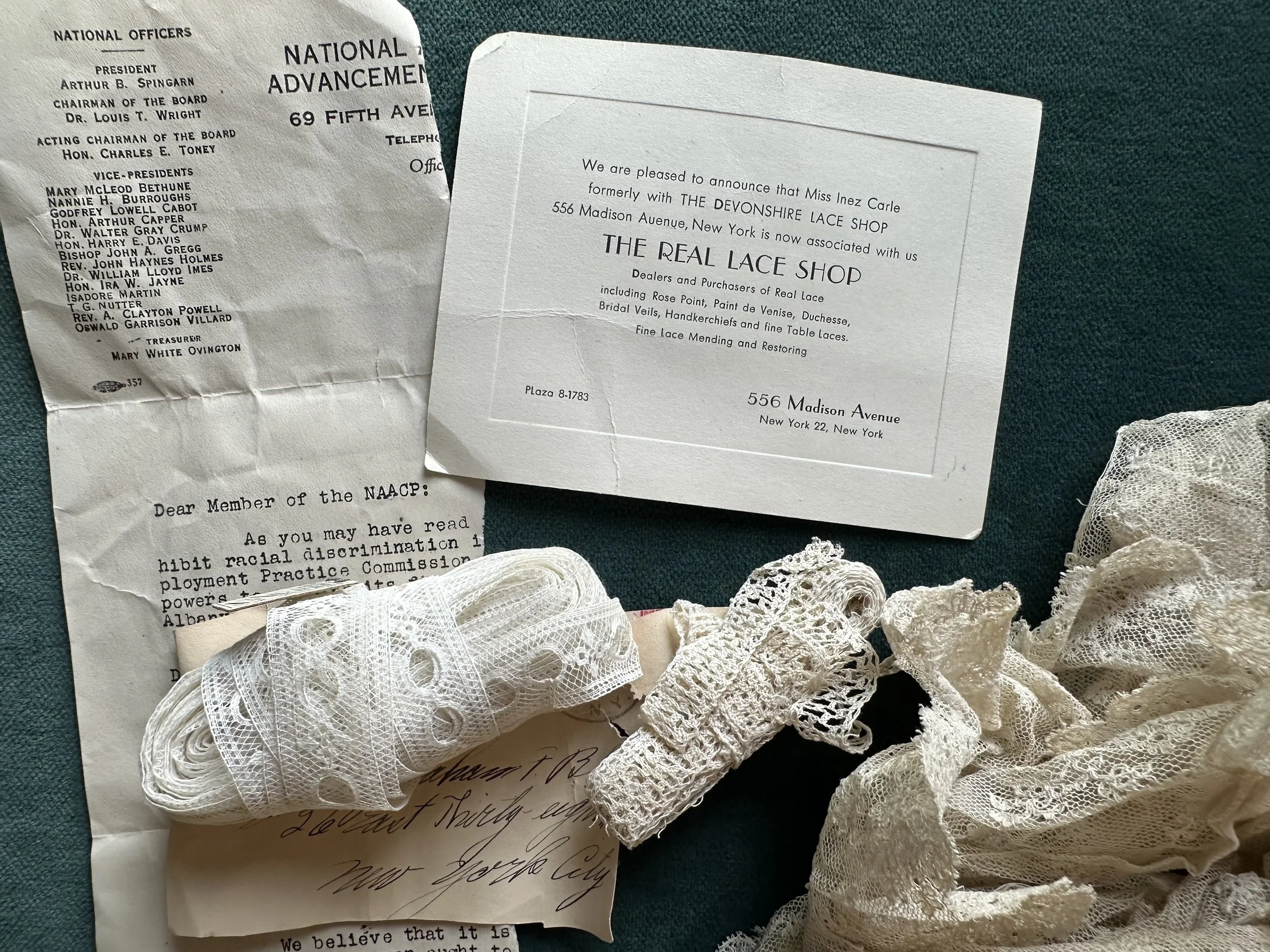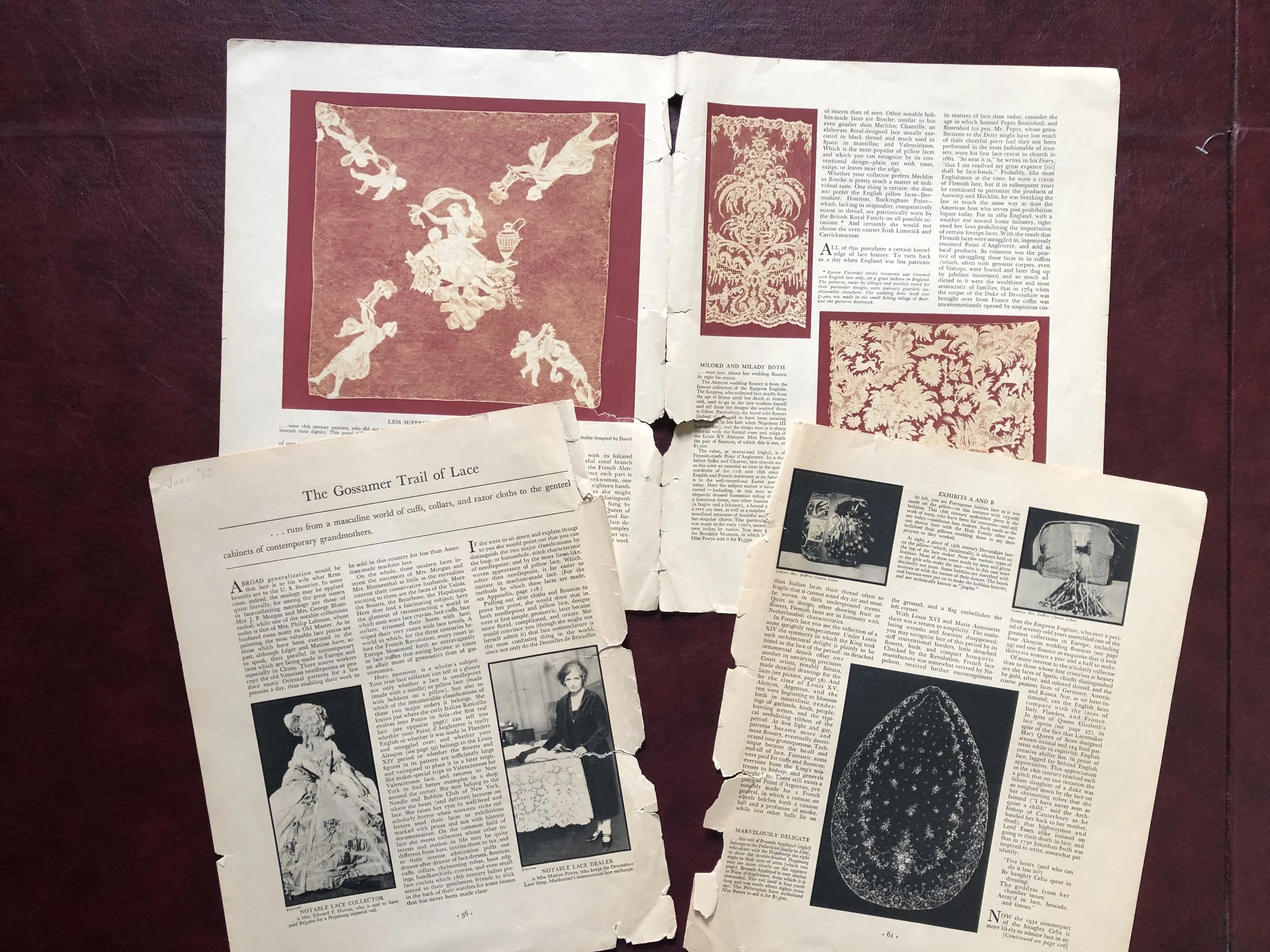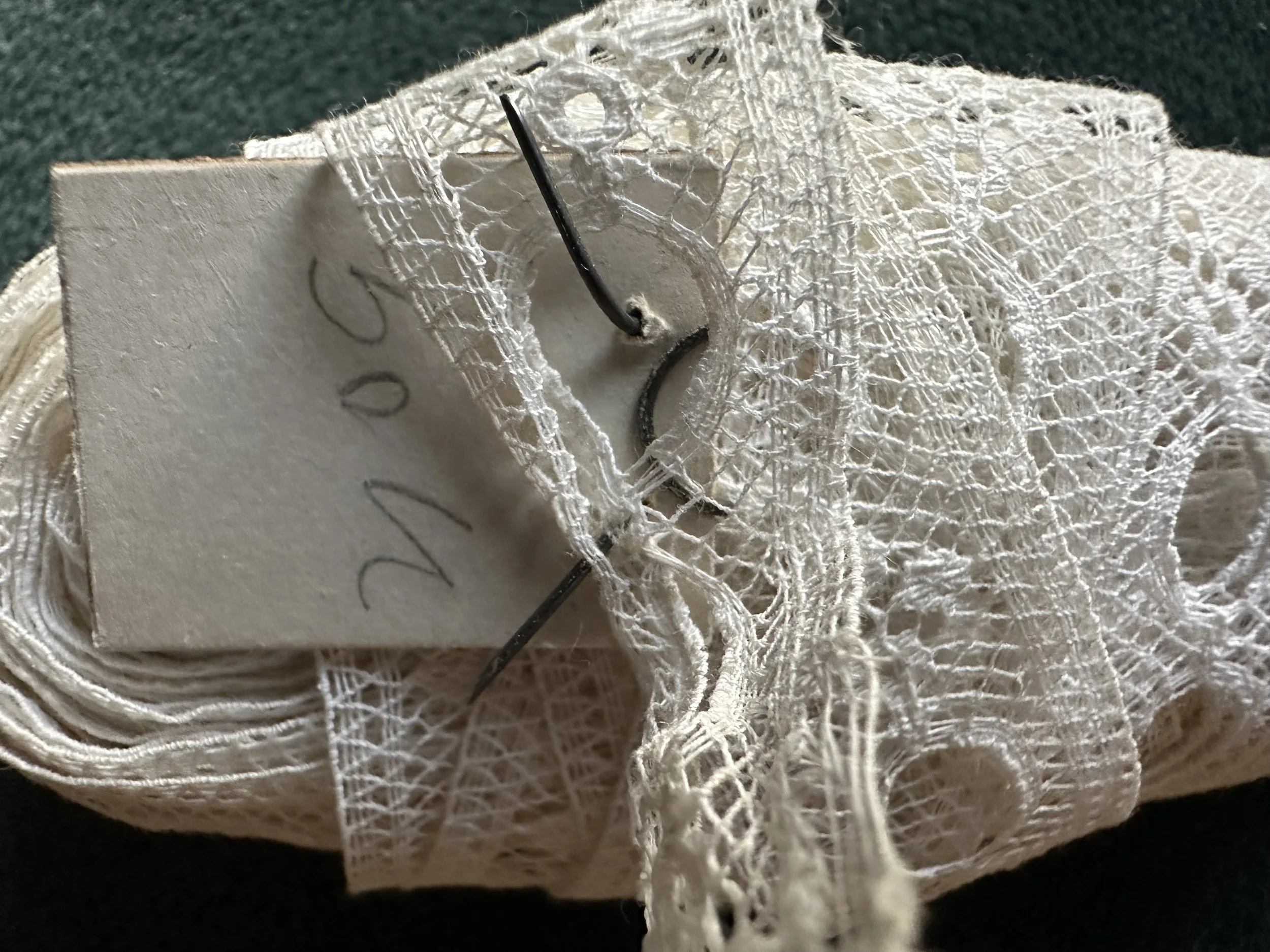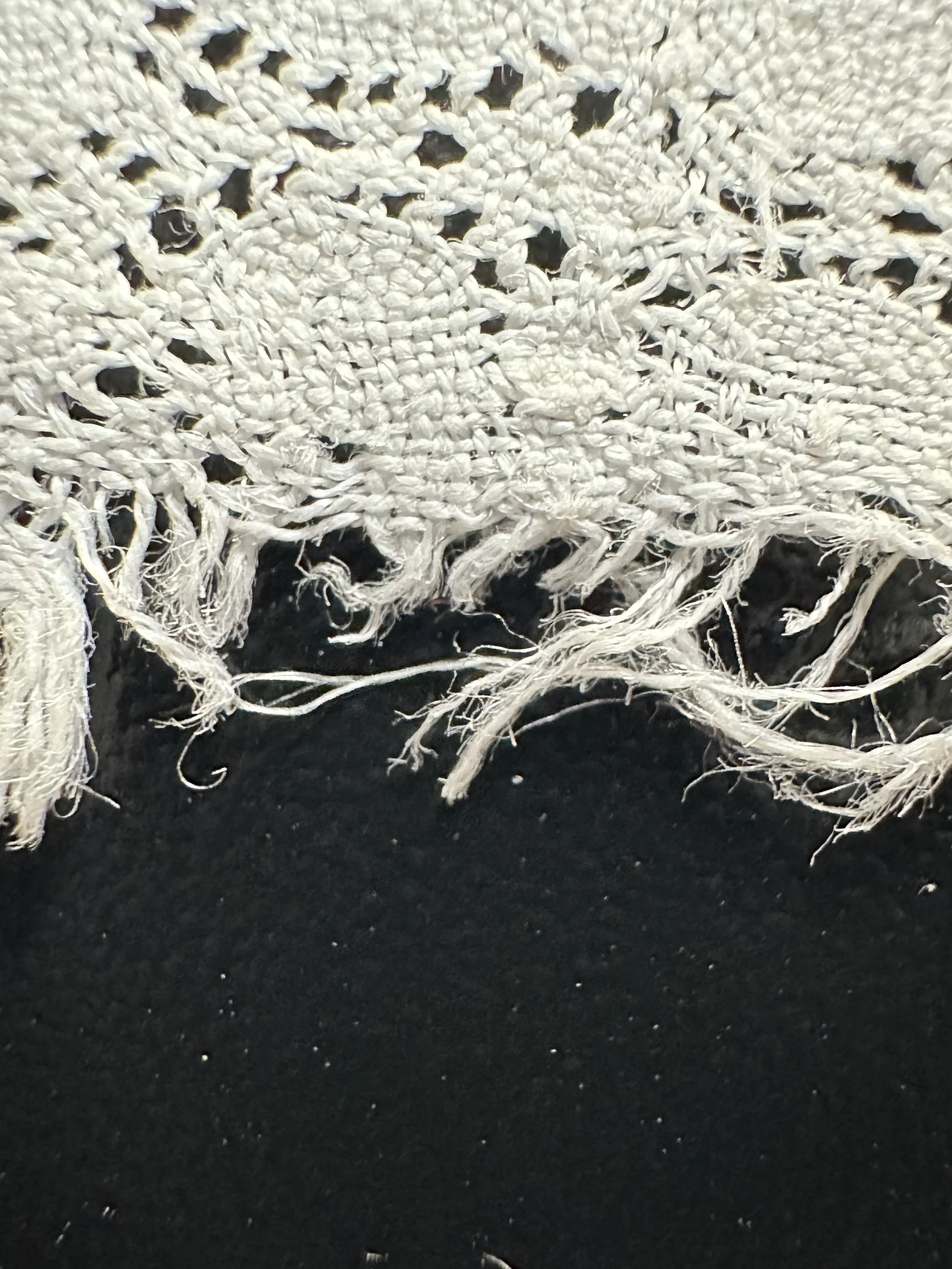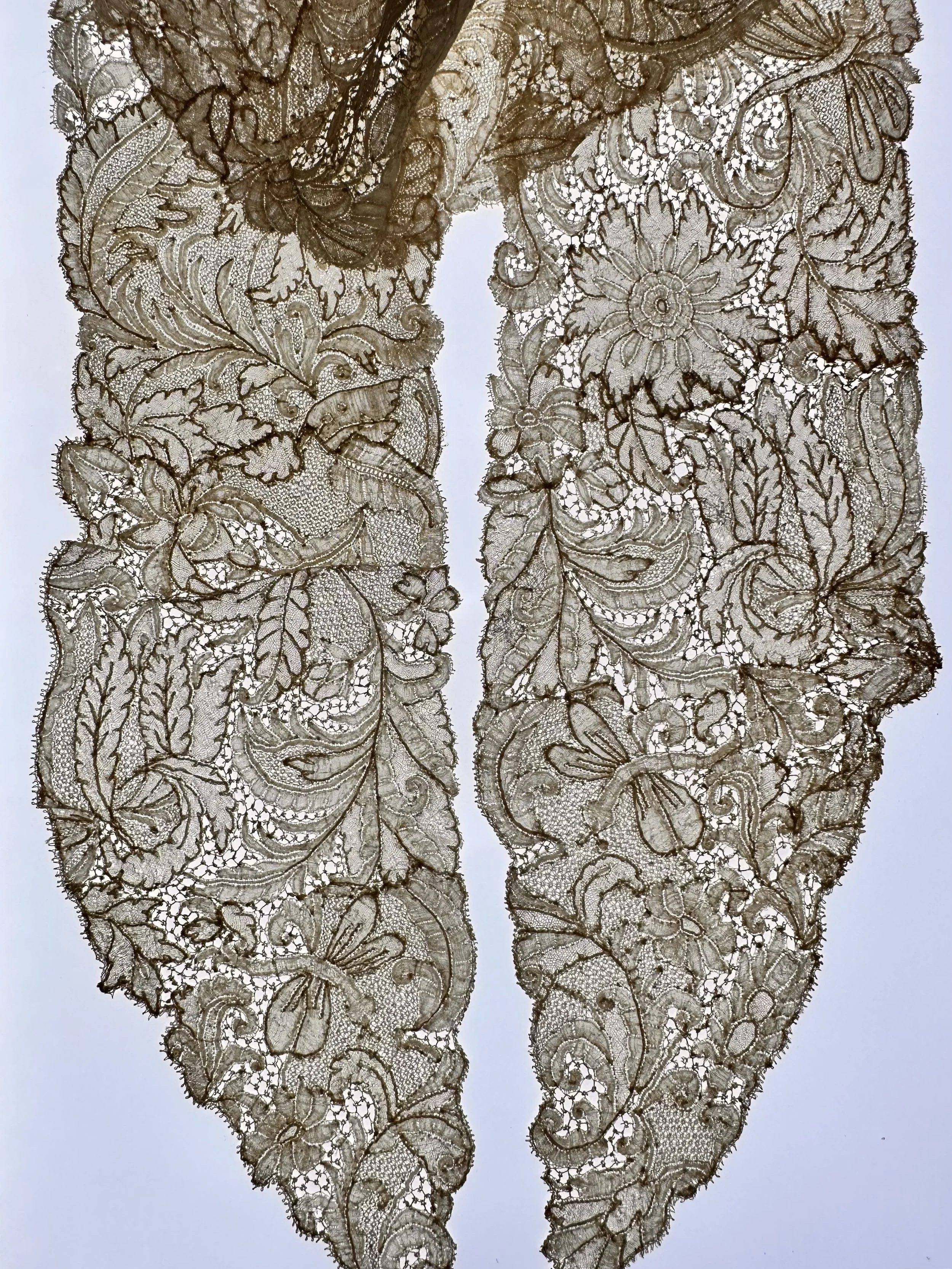How to Approach That Stash of Old Lace
Approach any stash of old lace with great optimism. No matter how dusty a jumble of old lace might be, the prize for searching might be something worn at a reception in the court of the Sun King at Versailles in the late 1600s. For centuries, antique lace was treasured, saved, studied, collected, and revered by the highest of high society. That was up until the 20th century when depressions, world wars, and the dismantling of great empires also dispersed the great lace collections. Much of that lace of course went to museums, but many wonderful surprises still are hiding in dusty stashes put away by families decades ago.
Inez carle ephemera NAACP, photograph by and courtesy of Elizabeth Kurella.
Learning How To Search
Sitting in a room alone with shelves and shelves and dozens of bags and boxes full of old lace is an ideal way to learn the art of sorting stashes of old lace. About forty years ago, when I started collecting, Phillips auction house in London was the place to go for old lace. They held at least half a dozen auctions per year of textiles and lace, each with dozens to hundreds of lots. As an overseas visitor, I was allowed free access to the storage room to rummage through lots for upcoming auctions.
On actual viewing days, I would stand back and watch professional dealers with stalls on Portobello Road or Bermondsey Market sit on the floor, sorting and making piles. Scraps for crafters and seamstresses, costume pieces, doilies, decorator pieces, yardage. Always searching for rare collector’s pieces that could cover the cost of a whole lot. They made their notes, calculated their bids, jumbled it all up again, and returned the stash to the shelf.
Fortune Magazine Pages, photograph by and courtesy of Elizabeth Kurella.
Magazine articles in these days told me there was market lace and collector’s lace. Things to use and things to revere and save. That, of course, was nonsense. People will wear, use, save, collect for their own personal reasons and pocketbook. After the mid-twentieth-century dissolution of the Needle and Bobbin Club of New York, the exclusive Gilded Age New York collectors’ club, there was no one to truly say which was which.
I learned lace truly was sui generis: unlike anything else in the world. There is the substance of lace, and there are lace objects. They are interchangeable, constantly changing. In the 1500s, Gros Point de Venise was the lace of choice for men to wear with their suits of armor, and ladies to drape their dressing tables and bed hangings. Objects and remnants were saved and show up today in cobbled and artfully shaped Victorian collars and endless other forms. The same has been true for every type of lace for over half a millennium. It is out there for those who take time and care to look.
Know Your Objective
Whether the purpose is a formal appraisal, providing information for donations, documentation for insurance purposes, or perhaps with an eye to collecting for yourself, the unique nature of antique lace is essential to consider. There are many markets for antique lace. Some are interested in the substance of lace as a collectible, as raw material for crafts, or for inspiration for today’s lace artists. Others are interested in the objects - again as collector’s items, or for use as originally designed, or for new, creative purposes.
This object/substance duality also influences the value. Intrinsic value says how good the lace truly is, and market value is what someone likely is willing to pay. Substance may be is worth more than the object.
WW Pins in Old Lace, photograph by and courtesy of Elizabeth Kurella.
Evaluating the Lace
The factors that influence the value of old lace are design, technique (how hard are the skills required to make it), workmanship (how well it was done), condition, and rarity. Age is always relative. Badly designed and poorly made lace is difficult to sell even in the best of condition, and even if it is really old.
Sorting the Lace
Actually sorting the lace starts with a word of caution. Rusty pins are everywhere: attaching labels, joining pairs of cuff, or for no particular reason. Just be careful.
Sorting by category is a good starting plan: wearable items, decorator items, yardage, and scraps. Gather and untangle the yardage. Sort out the collars and cuffs, scarves, and lappets. If you find one piece that looks perhaps like a cuff, look for the matching piece. Handkerchiefs - always there. Check the condition of everything. Dirt often can be washed out, but stains usually cannot. Dry rot is fatal. If a very gentle tug shreds the threads, it may be doomed.
Always look for the unexpected. Is that square piece of lace a doily, or a 17th-century pall or chalice cover? Is that deep flounce of lace from a Victorian gown or part of the vestment of an 18th-century Cardinal or bishop? Save every bit and scrap for a close look. Collectors love to swap stories of legendary finds: A few inches of Point de Neige needle lace from the mid-1600s found at a church rummage sale for a pittance, something a collector would eagerly pay $100 plus for.
Look closely at the Lace
Close-ups of thread manipulations, photographs by and courtesy of Elizabeth Kurella
The features that will identify the age and value of old lace and support an insurance claim are in the thread manipulations. This requires a highly magnified view to see. Fortunately, this became easy to do with cell phone cameras. It is not necessary to memorize classic combinations of thread manipulations - that’s what reference books that identify handmade meshes and other thread manipulations are for. Use them.
Have and USE checklists
Because how lace manifests itself is so complex, a set of checklists to evaluate both the object and the substance it is made of is invaluable.
Design, technique (the thread manipulations), workmanship, condition, and rarity are the key features of both the substance of the lace and the object it appears in. That means taking a really close look at each piece in the stash, and considering all those features for those aspects of both the substance and the object.
The design has to be good to command a good price. It also helps identify the time frame and quality, and to determine if the substance matches the design of the object. Lace clearly of a sixteenth-century design in a Victorian collar is suspect. Is it really old, or a repro?
In looking at the substance of lace - the thread manipulations - it is important to consider each part of the design. The dense areas that define the design, the edging or outline of those dense areas, and the background. The background - whether it is a mesh, connecting bars, or a combination of both. A handmade mesh can place a piece before 1800s, when the first machine nets were introduced. It can also greatly influence the value and price. Finally, note how each of those parts is ornamented. Those are the details that will determine the intrinsic value and help define the potential market. Again, a good reference book for those features is essential.
WW Backlit Dragonfly Lace, photograph by and courtesy of Elizabeth Kurella.
Draw Your Own Conclusions
Coin collectors, stamp collectors, comics collectors — most antiques have their guide books for judging and collecting. There are no rule books for antique lace. Lace collectors must think for themselves, and interests change as society changes. As society becomes more and more artificial, finding authentic humanity in a stash of old lace is what ultimately makes it worthwhile. Each collector decides for themselves what is worthwhile: a quaint mend in a “something old” lace handkerchief defines the work a long marriage requires rather than the instant perfection of the wedding day. Honor and respect for the remarkable skill it took a Victorian seamstress to rescue and reassemble fragments of Marie Antoinette era lace into new headdress streamers is gradually turning “altered” objects into valued collectibles.
The stories of long and interesting lives of old lace make it worth the diligent study it takes to delve into that stash of dusty old lace.
© Elizabeth Kurella 2025
About the Author:
Elizabeth Kurella is the author of Guide to Lace and Linens, Secrets of Real Lace, Anybody Can Mend Lace and Linens, as well as other articles and books. She has been teaching an online series of Studies in Antique Lace for The Lace Museum in Silicon Valley for the past several years. Reading Lace, a video series from The Lace Museum that uses the analogy of learning to read lace as we read language shows us how to find the stories and value in old lace.
